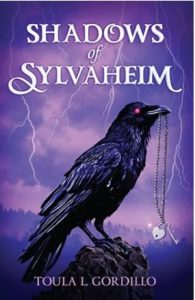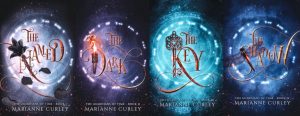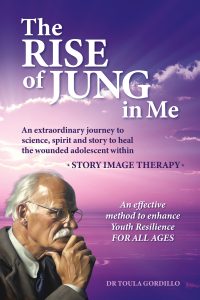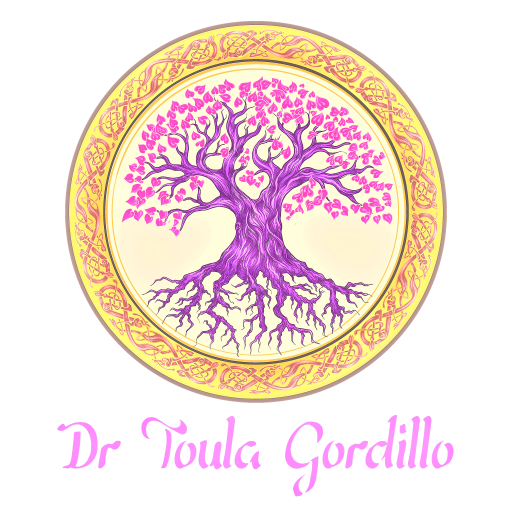Books
Shadows of Sylvaheim

As part of her doctoral studies, Toula wrote a Young Adult (YA) mythic heroic fantasy novel entitled Shadows of Sylvaheim. Now available as a book, ebook and audiobook, it is used as an integral part of SIT Shadow Work™. This coming-of-age story describes two siblings’ heroic journey to confront and integrate their personal “shadows” – their greatest fears and temptations – in a mythical universe called Sylvaheim. The novel and ebook are available for purchase from the stores below:
| Feather Knight Books | Amazon | Amazon Australia |
| Barnes & Noble | Kobo | Google Books |
| Google Play | eBooks2go | Amazon Kindle |
| Booktopia | Abe Books |
With over 30 character voice narrations to bring the story to life, the Shadows of Sylvaheim audiobook is available from: Audible, Apple Books, Booktopia.
Story synopsis
Following a family trauma and the discovery of a huge family secret, sixteen-year-old Jack and his sister Emily (14) are catapulted into a world of pain, and fantasy. In a symbolic exploration of the character’s unconscious mind, Jack battles an ogre, converses with a riddle-talking tree, falls in love with a sea nymph and visits Faerieland. His ultimate battle is to defeat Lord Batu Glass… a character in the novel symbolising his unconscious, potential drug addiction.
Separated from her brother by a huge hedge of silver, Jack’s sister, Emily, is simultaneously stuck in an Estonian bog whilst pursued by the new trickster goddess, Morgana. Emily’s character also gets her shadow ‘cut’ in a symbolic acknowledgement of confronting and integrating our own shadow.
While the reader is absorbed in the story, they are exposed to Jungian psychology, Stoic philosophy, literary prose and historical characters such as King Henry VIII and Marcus Aurelius. Upon reflection, READERS OF ALL AGES can learn effective ways of coping with grief and loss, poverty, trauma and overcoming drug and alcohol addictions with a Jungian lens.
Endorsement
Shadows of Sylvaheim has been endorsed by International best-selling YA fantasy author of The Guardians of Time series, Marianne Curley. She states: “I really believe you have a winning book there, and with your expertise, one that will help young people and their adult caregivers. You can’t get better than that! Best wishes, Marianne”.


The Rise of Jung in Me

Part narrative memoir, part scientific research, and part case study, this true hero/heroine’s journey story describes the author’s own lived experience of healing her adolescent ‘wounds’. These wounds (called negative adolescent complexes in Jung’s psychology) were causing her significant stress, and emotional distress, as an adult.
In The Rise of Jung in Me, Dr Toula outlines STEP-by-STEP how she engaged in SIT Shadow Work™ to heal her adolescent issues as an adult. She uses interesting anecdotes, written in storytelling form, and supported by symbolic images, to help reinforce the book’s psychospiritual (psychology and non-religious spirituality) and philosophical messages.
Dr Toula also offers six case-studies of how she now helps other people (OF ALL AGES) to heal their inner ‘wounded adolescent’ through ancient and modern STORIES & IMAGES during Story Image Therapy (SIT®).
These visual storytelling tools form the foundation of Story Image Therapy and its adjuncts, SIT Education and SIT Shadow Work™.
My Frog and Scorpion Shadow
Coming Soon! Frog and Scorpion in the Boardroom is a small parable that offers an introduction to SIT Shadow Work™ for busy professionals, managers and entrepreneurs. Written in a fairytale format for life and business, this deceptively simple story contains the three types of business knowledge, information about our shadow self, human nature and office politics.
The Frog and the Scorpion in the Boardroom parable also contains the SIT Solution: “Use the Caring Continuum and Seven Keys to Resilience to achieve the 80/20 Balance.” The aim of this solution is to help the reader to not just survive in high stress, high pressure or conflict situations… but to thrive in them!
Written in a fairytale format, the parable contains significant wisdom in this deceptively simple story. Used as part of Story Image Therapy (SIT®) and SIT Shadow Work™, the book employs imaginative ways to deliver important information through the hero’s journey and several other symbolic metaphors.
My Frog and Scorpion Shadow is based on the teachings of Dr Carl Jung and the Natural Law (Stoic and Taoist) philosophers. It delivers holistic health information via an adapted version of an early Aesop’s fable, entitled Frog and Scorpion in the Boardroom.
Only one who has risked the fight with the dragon and is not overcome by it wins the hoard, the “treasure hard to attain.” – Carl Jung, CW 14, par. 756
Stress and My Shadow

Stress and My Shadow Workbook: An Introduction to Story Image Therapy (SIT®) and SIT Shadow Work™ is a theoretical and practical guide in how to use Jung-based mythic heroic social stories and images in teaching and counselling young people. It also outlines the theoretical foundations of Universal Psychology and its practical application method: Story Image Therapy.
Unlike The Rise of Jung in Me which contains Dr Toula’s personal narrative to Jungian psychology and Stoic philosophy for youth health and healing, Stress and My Shadow is a teaching and counselling resource to explain how and why to use ancient psycho-spiritual STORIES & IMAGES for modern health and wellness. That is, what Dr Toula calls our Bed of Life.
Stress and My Shadow is a window, mirror and sliding glass door to another way to potentially enhance resilience IN ALL AGES. It is an specially useful resource manual for grief and loss, depression, anxiety, stress, burnout and trauma.
